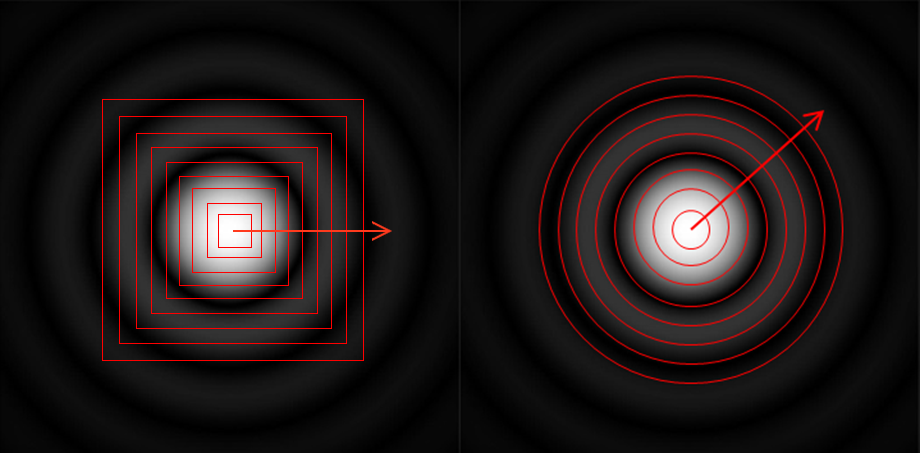
Here at Optikos we spend a lot of time measuring the imaging quality of lens assemblies. In most cases, traditional measurements of Modulation Transfer Function (MTF) are well correlated with lens performance in its intended application. However, in some cases, characterization of encircled and/or ensquared energy serve as better indicators of lens performance.
This is true for lenses designed to focus as much energy as possible into a circular or square area that corresponds to a critical dimension in the system detection sensor (detector active area, thermal array pixel, etc.). Maximizing resolution, or producing high contrast in the smallest image details is not required and, given the clear benefits for manufacturability and cost, it is beneficial to NOT design a system for maximum resolution. Rather than measuring MTF, characterizing the energy density with EE measurements is preferred. Please note both encircled and ensquared energy are abbreviated EE – so take care!
A new article prepared by Optikos engineers describes the definition and measurement of encircled and ensquared energy and details of one application where encircled energy (EE) is used for final lens qualification. Specifically, this lens is used in a LIDAR scanner on an autonomous vehicle. In this application, typical imaging resolution is less important than maximizing the amount of signal that falls on the LIDAR detector. Using an Optikos LensCheck™ System with a pinhole target chosen to match the angular subtense of the LIDAR beam, the Optikos metrology team has obtained EE results that accurately predict lens performance in the LIDAR scanner. These EE results are currently used by Optikos manufacturing technicians as the final test of lens performance before each lens is delivered to the customer.
As described in the EE article, lenses that produce very similar and acceptable EE results can exhibit wide variations in measured MTF. This is interesting, as one might expect a lens with a “good” MTF at a specific spatial frequency to also have a “good” EE result over a specific image radius.
This is just one example of an application where encircled energy (EE) serves as a better indicator of lens performance than standard measurements of image quality (MTF, SQF, Strehl Ratio, etc.). Stay tuned for the upcoming SPIE Optics & Photonics digital conference when we will explore this topic in more technical detail.
Return to Anywhere Light Goes blog.
Written by Roy Youman, Optikos Corporation

